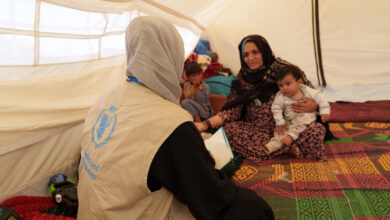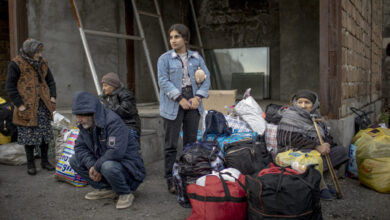Interview with Dr. Farzad Jalilian, a researcher from the Department of Plant Medicine Research, Kermanshah Agricultural Research Center
In this short interview, we investigated climate change and its role in Iran

Hello, Dr. Jalilian
My first question is about the earth’s climate changes. How much do you think these changes have affected the cycle of organisms that we call pests, both globally and in our own country of Iran?
Climate change has generally increased the damage caused by pests. In recent years, due to water scarcity and climate change in the Zagros forests, charcoal disease, which is a type of endophytic fungus, has spread and caused extensive drying in trees. Thousands of hectares of these forests have been destroyed due to this disease, which is mainly caused by the decline in groundwater levels. Walnut trees, which are native to cold regions, are dying due to the dryness of the branches. The weakness of the trees has changed the plant sap and sent some signals to wood-boring insects, which will attract them and increase the damage. The movement of millions of swarms of locusts from Africa to the Middle East and Iran, which has intensified in recent years, is due to severe droughts in the main areas and the need for migration.
My second question is about the fears and concerns that ecological changes can have in global food security and the Middle East. Please tell me about it.
Climate change has more intensity in North Africa and the Middle East, and these regions are even moving from semi-arid to arid according to NASA’s predictions for the next 30 years. In the southern provinces of Iran, such as Fars, due to water scarcity, which is mainly caused by excessive consumption and climate change, all irrigated lands are turning semi-rainfed and rainfed. Fars province, which was one of the country’s irrigated wheat production areas, has lost its position. According to the worst scenarios, except for the coastal strip of the Caspian Sea, there is no possibility of living in the Alborz and Zagros regions, where most of the country’s population lives, due to water scarcity in the next 50 years.
What is Iran’s situation in managing the challenge of agricultural and garden pests through natural means such as the cultivation pattern or the use of parasitic insects, etc?
According to statistics, 35 percent of Iran’s products are destroyed by damaging factors such as pests, diseases and weeds. This is inside the farm, and a significant percentage of them are also lost in the storage to consumption stage. In the context of climate change, the level of flowering plant cover on the margins of farms and orchards decreases. Predators and parasitoid insects use these plants as a refuge and food source of nectar and pollen for their complete insects. These insects are predators and parasites in their adult stages of life. The reduction of these plants causes a decrease in the populations of these natural enemies of pests and will lead to pest outbreaks. Most of Iran’s biological control is natural and protective, called conservation. A low level of farms and orchards, especially greenhouses, have been controlled by mass rearing and release in recent years, such as the use of bracon wasps in chickpea fields in the west of the country to control pod borer or the use of Trichogramma wasps in the north to control rice stem borer. The most common method of pest control in Iran is chemical, in which annually large amounts of low-quality pesticides are imported from China and India.
How many of the threats of agricultural pests in the country are from neighbouring countries?
The biggest challenge is related to the Arabian desert, where swarms of locusts attack Iran every few years.
And the final question
To what extent do you hope to improve Iran’s agricultural structure despite the challenges of sanctions and drought, etc.?
Thank you very much




